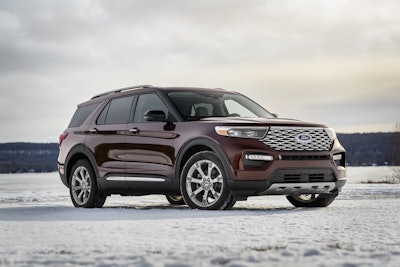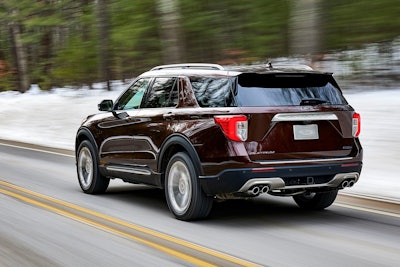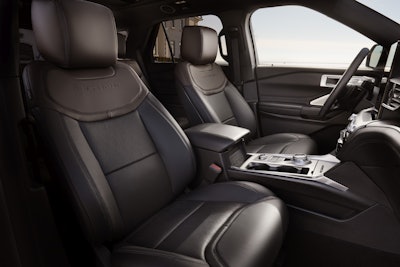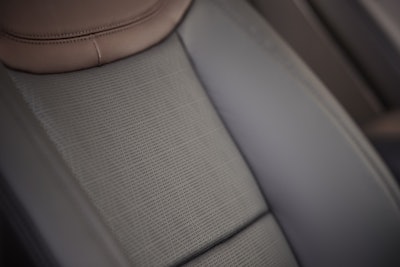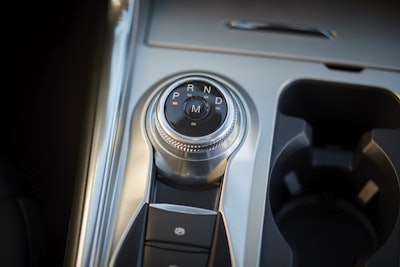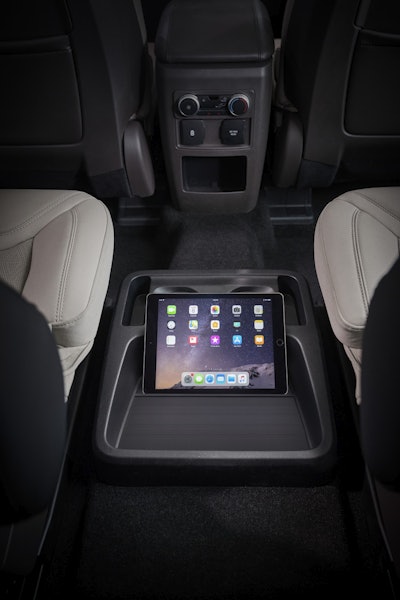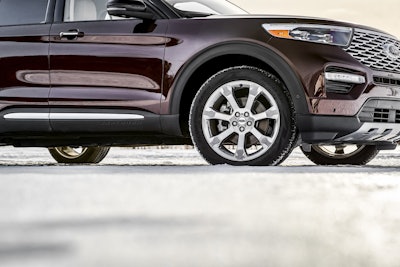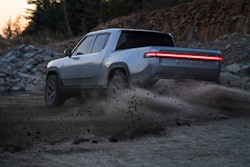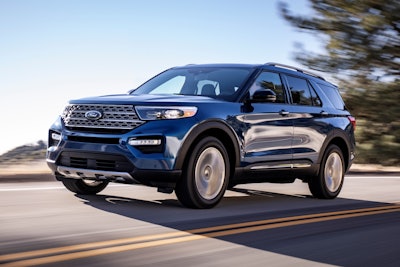
Though a lot of customers are perfectly fine with their three-row SUV being powered by a four-cylinder engine that produces less than 200 hp and less than 200 lb.-ft. of torque, Ford wants you to want more out of your do-everything vehicle.
Craig Patterson, Ford’s SUV marketing manager, says the company did a focus group with men who all owned Explorers. When asked to consider their next SUV purchase and how important towing capability would plan into that decision, each one of the focus group participants said “very important,” Patterson says. The guys were then asked what exactly they were towing today, and all of them answered “nothing.”
“Even though they weren’t towing anything, they want their SUV to enable that next adventure,” Patterson says. “I might get a boat someday…I never want [my truck] to inhibit anything I want to do in the future.”
Patterson says that high degree of versatility was a guiding focus for the ground-up redesign of the new Explorer, complete with an all-new rear-wheel-drive architecture.
The 2020 model year debuted Wednesday night at the Detroit Auto Show, but Equipment World was invited to get an advance look at the vehicle last week. Here’s what we learned about the vehicle Ford thinks can fit in in just about any environment, be it work or play.
More power, more powertrain choices
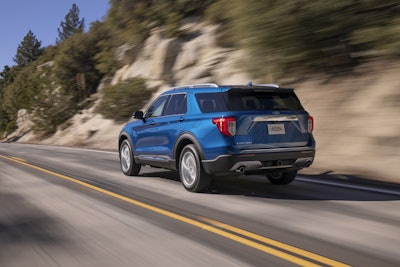
The 2020 Explorer will be available with a 2.3-liter turbocharged I-4 that will come standard on the base, XLT and Limited models, while a 3.0L twin-turbocharged V6 will power the Explorer Platinum. The 2.3L is no slouch, projected to produce 300 horsepower and 310 lb.-ft. of torque, which are both improvements over the previous generation Explorer equipped with the same engine.
The 3.0L V6 will produce 365 hp and 380 lb.-ft. of torque when using 93-octane gas, Ford says, which makes this the most powerful Explorer Ford has produced.
Beyond the big numbers produced by these engines, the 2020 Explorer also represents a return to rear-wheel drive for the SUV. This new drive architecture has opened up added towing capability, which is ample no matter which engine you opt for.
Explorers equipped with the 2.3L EcoBoost and a Class III Tow Package can tow up to 5,300 pounds, a whopping 77 percent increase over the 3,000 pounds of towing capacity offered by today’s similarly equipped Explorer. Meanwhile, Explorers equipped with the 3.0L EcoBoost can tow up to 5,600 pounds, a 12 percent increase over today’s Explorer powered by the larger 3.5L EcoBoost.
There will also be Hybrid and ST models of the Explorer, which we’ll have more information on at a later date.
New interior design maximizes cargo space, makes third row entry easier
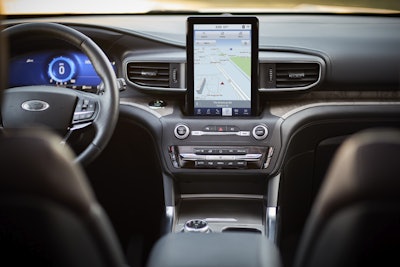
The new interior design of the Explorer is all about maximizing storage space.
For starters, the SUV has 123 cubic liters of stowage space throughout the cabin, offering ample places to put smaller items like bottled drinks and smartphones. But Ford has also made some changes to allow for some serious cargo storage behind the first row.
With the available PowerFold third-row seats and a new E-Z entry second row, the 2020 Explorer can now create a flat-floor cargo area that offers 87.8 cubic feet of cargo space. Ford says this puts Explorer at the top of its class in cargo space, making enough room for you to haul 4-feet x 8-feet sheets of plywood in that flat floor cargo space.
 The new Explorer features a reversible load floor in the rear.
The new Explorer features a reversible load floor in the rear.Those sitting in the third row of the new Explorer will also have an easier time entering the truck thanks to a new seat mechanism that allows you to fold the second row seat in half with one hand. Ford also placed a new, flat step pad at the bottom of the door that gives passengers entering the third row more stable footing while doing so. The step pad, Ford notes, also comes in handy when loading cargo onto the roof of the vehicle.
A new 10.1-inch touchscreen dominates the dash of the new Explorer. Mounted in portrait configuration, the display can show navigation maps in full screen as well as display different types of information like audio information and other apps in split screen.
Other interior features include:
- A reversible load floor in the rear that allows you to switch between a carpeted and vinyl surface. Comes in handy when you need to place items in the rear that are wet or muddy.
- Adjustable climate control for all three rows
- Hidden cargo spaces
- Zippered cargo nets
- Apple catcher – Prevents things from rolling out the back of the vehicle.
- Every seating position in the second and third row has an anchor for child seats.
- Active noise cancellation
- 14-speaker, 980-watt B&O audio system
- Dual-panel moon roof
- Wireless charging pad in center console
- 4 USB ports (both USB-A and USB-C)
- 110 volt outlet
- Three 12V sockets
- 4G LTE Wi-Fi that reaches up to 50 feet away from the vehicle
- Apple CarPlay and Android Auto integration
Technology
Ford is going all-in with the technology features on Explorer, including its Co-Pilot360 suite of driver-assistance technologies which includes:
- Pre-collision assist with automatic emergency braking
- Blind spot information system: If towing, will detect vehicle in blind spot of trailer
- Lane Keeping system
- Rear-view camera with washer at touch of a button
- Auto headlamps and high-beams
The truck will also feature an updated version of Ford’s Active Park Assist. Version 2.0 of this feature, which parks your car for you, now not only controls the steering wheel, but also manages the speed of the vehicle as it is parked. With the old system this replaces, the driver had to shift into forward and reverse and control the speed of the vehicle with the accelerator. Now, with the press of a button, the 2020 Explorer will park itself into a parallel or perpendicular space.
Optional tech features include:
- Reverse brake assist: If there is an object behind the vehicle, sensors in the bumper can detect it and the brake will be applied in the event the driver doesn’t apply it soon enough.
- Intelligent adaptive cruise control with speed sign recognition: Front facing camera in the front of the vehicle can detect speed limit signs and slow the vehicle when in cruise control to ensure the speed limit is being followed. In the event that speed limit signs aren’t available, Ford says the system checks the speeds listed in the navigation system for guidance. The feature can be disable and can also be set up with offset speeds 10 mph over or under posted speed limits.
Safety features include:
- Safety belt monitoring that lets you ensure all occupants are buckled
- New pre-tensioning technology that can help reduce whiplash in the event of an accident
- Side-wind mitigation: Activates brakes on left and right side of the vehicle to mitigate force of wind when detected.
